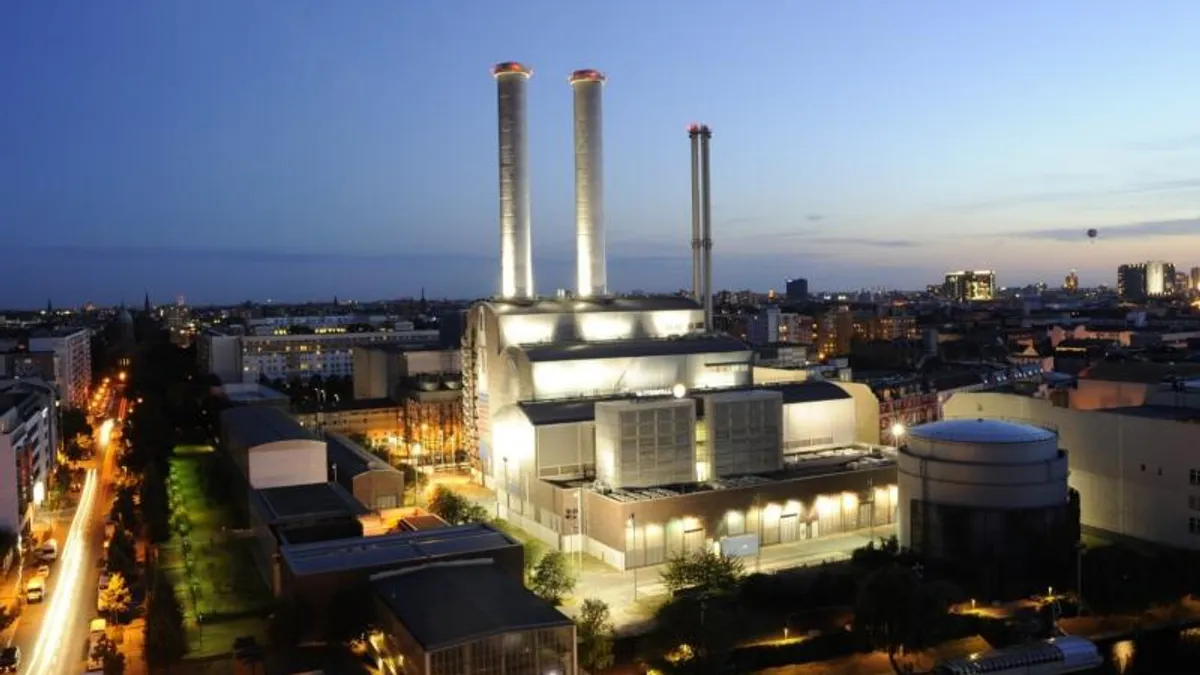Dive Brief:
-
Power generators criticized a proposal from grid operator ISO-New England to transition its capacity market to valuing fuel secure resources, telling federal regulators the plan would depress market clearing prices.
-
The ISO's proposal would treat plants with onsite fuel supplies as price-takers in the region's next capacity auction, not allowing them to set market prices. The grid operator argues this would allow it to keep critical plants online without altering market prices while it designs new rules for fuel secure resources.
-
Power generators say this plan would actually lower clearing prices in the capacity market, cutting into their revenues. They pushed the Federal Energy Regulatory Commission (FERC) to direct the ISO to institute a price floor or other market rules that would prevent price suppression.
Dive Insight:
Recent filings in the ISO-NE fuel security docket illustrate the difficult task of valuing plants with onsite fuel supplies — one that could soon spread to other wholesale markets.
This spring, ISO-NE filed with FERC for a waiver to provide cost recovery for the 1700 MW Mystic Generating Station in Boston, saying that it and an adjacent liquefied natural gas import facility are crucial to ensuring reliable power during winter, when natural gas transported by pipelines is diverted for home heating.
FERC rejected the request, saying it was too broad, but allowed the Mystic plant to apply for short-term cost recovery and directed the ISO to quickly design new market mechanisms to value fuel secure plants.
ISO-NE responded at the end of August, proposing to treat Mystic as a price taker until it can design those new market mechanisms.
Under that treatment, Mystic would offer its bids into the capacity market at zero and be forced to receive the price cleared by the market. If Mystic is approved for cost recovery, any market revenues it receives would be subtracted from the costs ratepayers would contribute to keep the plant open.
Rival generators say offering that extra capacity into the market will necessarily depress the clearing price.
"ISO-NE's attempt to guarantee that the Mystic Units clear the [capacity market] by dumping their capacity into the market at $0 will necessarily reduce the compensation received by other, non-subsidized resources that contribute to meeting fuel security needs, thereby increasing the likelihood of additional premature retirements and exacerbating fuel security concerns," the New England Power Generators Association, a trade group, wrote in comments to FERC this week.
ISO-NE argues this argument misses a crucial point: that Mystic would still be providing available generation — a "resource adequacy" contribution — if it were retained for fuel security. Blocking Mystic from participating in the capacity market would allow other resources to fill that missing capacity, the grid operator argued, leading the market to procure too many resources.
"If the ISO were to ignore or discount their resource adequacy contributions for purposes of determining [capacity market] awards and prices ... the [market] clearing price would be based on an incorrect and inflated estimate of capacity's incremental contributions to resource adequacy," ISO-NE wrote. "This price signal would lead the region to procure more capacity than specified by its demand curves, representing an expensive and inefficient outcome for the region."
Generators argue that instead of price-taker treatment, the ISO should institute a strict price floor in the capacity market, which would block low bids from resources receiving subsidies or cost recovery.
"[We] acknowledge that a price floor may result in some amount of over-procurement in the near term," generator Vistra wrote, "however, such a result is far more consistent with just and reasonable rates than the price suppressive result of ISO-NE's proposal."
"[T]here are numerous alternatives that could be implemented in advance of [ISO-NE's next capacity auction] to ensure that the retention of the Mystic Units does not artificially suppress capacity prices and exacerbate fuel security concerns," NEPGA wrote. "Each of these options—including the alternatives identified by the Commission in the July 2 Order or implementation of a price floor as a transitional mechanism—would be less likely to result in the premature retirement of additional fuel security resources than ISO-NE's proposal."
ISO-NE argues it evaluated a price floor and the more complex market mitigation efforts FERC suggested in its order, but found the price taker treatment to be most efficient. FERC did not mandate specific market reforms, the grid operator pointed out, but said that "different price treatment other than what the Commission has directed in the past 'may' be reasonable."
"Thus, the ISO fully complied with the July 2 Order by considering the suggestions proffered by the Commission as well as other design concepts, and included a proposed price treatment mechanism based on its analysis," ISO-NE wrote.
FERC said in its July order that it hopes to have a decision in the fuel security docket before the ISO's next capacity auction in Feb. 2019.














